The town of Viareggio, on the Versilia coast, is home to one of the most impressive Carnival festivals in Italy. Attracting crowds of more than 600,000 people each year, it’s one of the most important and not-to-be-missed dates of the year!
Carnival celebrations are held all over Italy from Venice and Milan down to the villages and towns of Sicily with many of the biggest celebrations on Martedi Grasso (Mardi Gras) or Fat Tuesday.
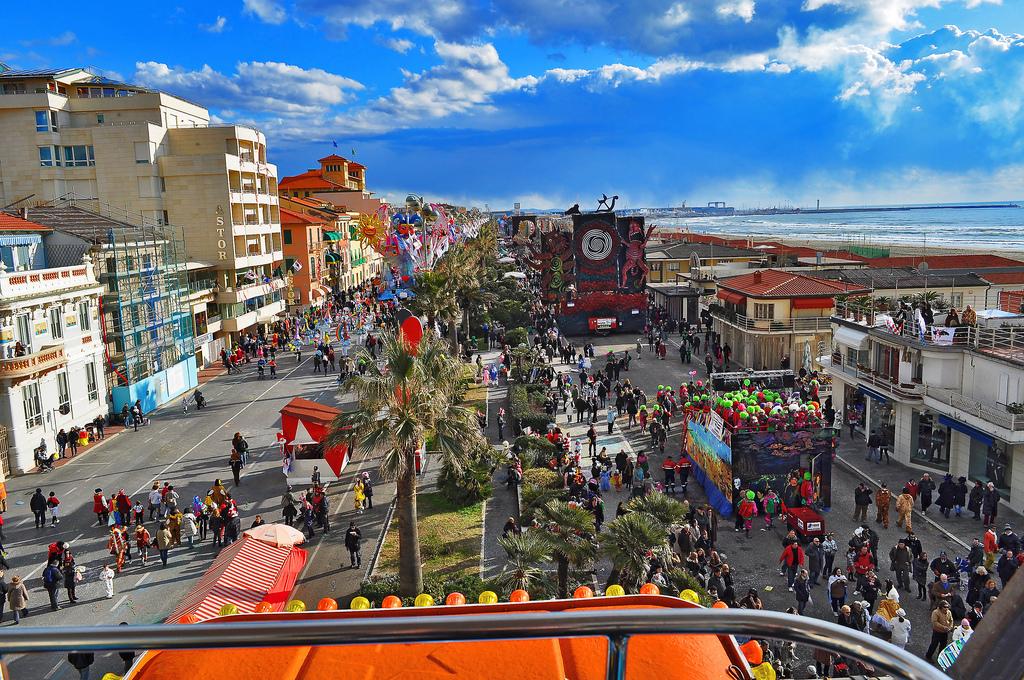
Second, only to the famous festivities held in Venice, the Carnival of Viareggio was born in 1873 with the first parade of festively decorated carriages in the historic Via Regia, the heart of the old town. It was transferred to the Promenade at the beginning of the twentieth century and has grown in size and popularity year after year. In 1954 a big media event was created when the newly founded Radiotelevisione Italiana – RAI sent their first outside live TV report from the Carnival of Viareggio. In 1958 the report of the parade was broadcast in Eurovision and nowadays it is the largest Italian folk event with a budget of € 5 million per year.
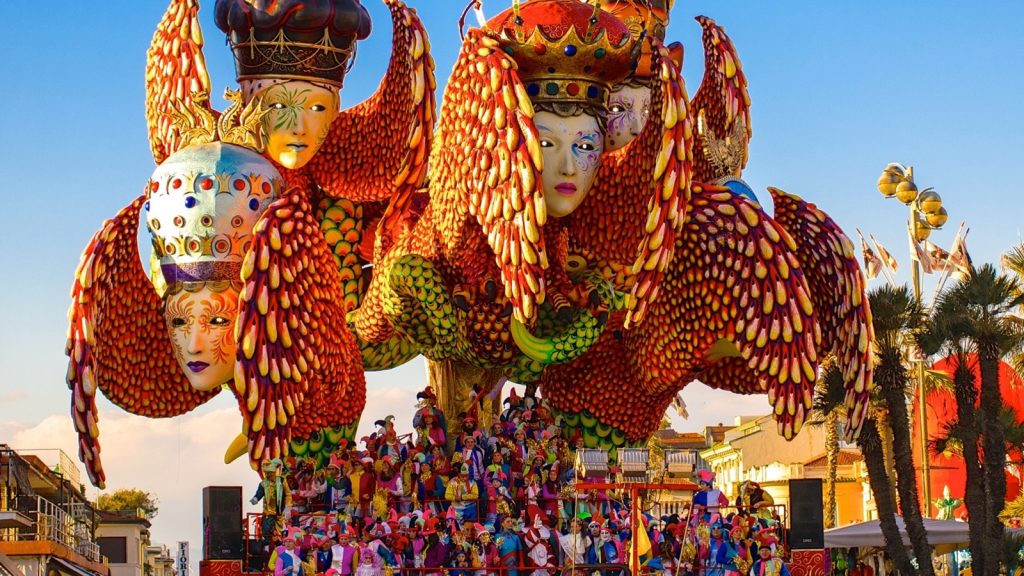
The Viareggio Carnival lasts a whole month with day-time and night-time festivities, the famous parades of floats, local parties, masked balls and festivals of all kinds. It has become a well established European tradition of carnival festivals, with parades and celebrations that are held for the five weekends before lent begins on Ash Wednesday. Lent has historically been the time before Easter – when many Catholics deprive themselves of something they enjoy. I remember the classic thing when we were kids was to give up chocolate or sweets……… but I don’t think I ever managed to last the whole period of lent, no matter how good my Catholic intentions were when the promise was made! The thought is to party, feast abundantly and then spend the period of Lent recovering.
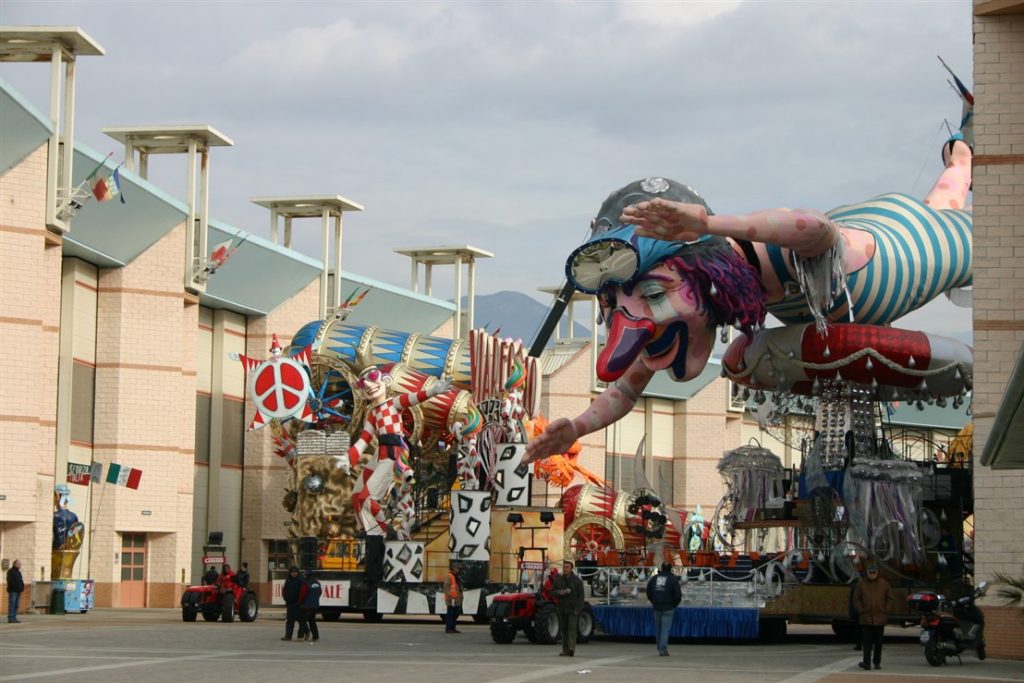
In 1960 the burning of the original shacks in via Cairoli, where the floats were built, failed to put a stop to the Carnival. The float yards were then moved to the hangars in Marco Polo street and then in 2001, an extraordinary architectural complex entirely dedicated to the creation and preservation of the Carnival of Viareggio was inaugurated and known as the new Cittadella del Carnevale. Sixteen hangars, where the “Papier-Mâché Masters” set up the huge Carnival floats, overlook a giant elliptical square. The complex has a specific architectural structure, in addition to the hangars, there is the Carnival museum, Carnevalotto Museum for contemporary art, a historical archive, a restaurant and the big central square, where some of the most important events of Viareggio take place, like summer concerts, parties and dance shows.
These days the Carnival of Viareggio is watched all over Italy as it is broadcast on national television every year. Each year famous guests, politicians and sports figures come to Viareggio to admire their papier – mâché effigies although not all are complimentary!
It attracts more than 600,000 people each year so be prepared if you decide to brave the crowds. Getting there by bus or train is probably the best option! The parades take place in a 2km long, ring-like circuit on the seaside avenue, known as La Passeggiata. Here the floats move among the crowds of spectators, who can attend the show with no barriers becoming, in turn, the protagonists of the parade.
The streets become covered in multi-coloured streamers and confetti – called coriandoli in Italian as carnival-goers throw it everywhere as they party throughout the day and night.
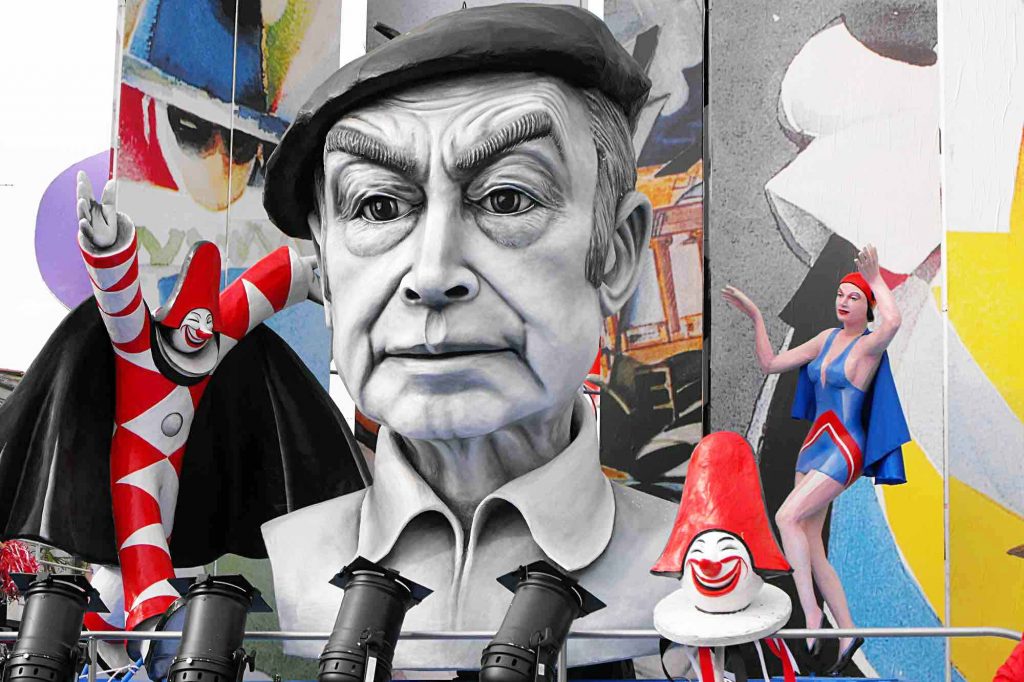
And for those of you following the Viareggio Carnevale this month, you may have seen the iconic ‘clown’ dressed in the red and white costume, affectionately known as Burlamacco. As well as being the Carnival mascot, he is also the town mascot for Viareggio and you can admire a permanent statue of him on the Lungomare promenade. You can read more about him in my post about Uberto Bonetti, the local artist who created him as well as many of the Carnival posters for many years.
One of the first indications for me that the season of Carnevale is here is when I start to see the beautiful sweets and pastries in the bakery that are synonymous with Carnival like the sweet crisp pastries most commonly called Cenci or Stracci in Florence and Tuscany. They are also called Chiacchiere and Bugie and I personally grew up adoring my Nonna’s version which we called Crostoli.
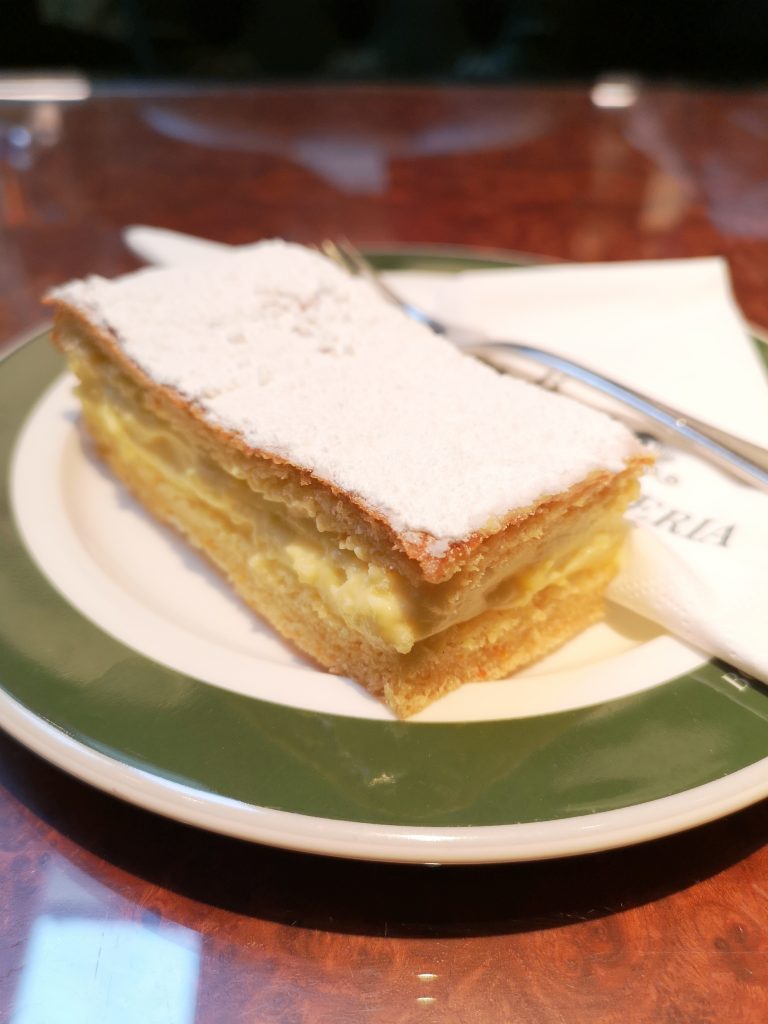
Schiacciata alla Fiorentina 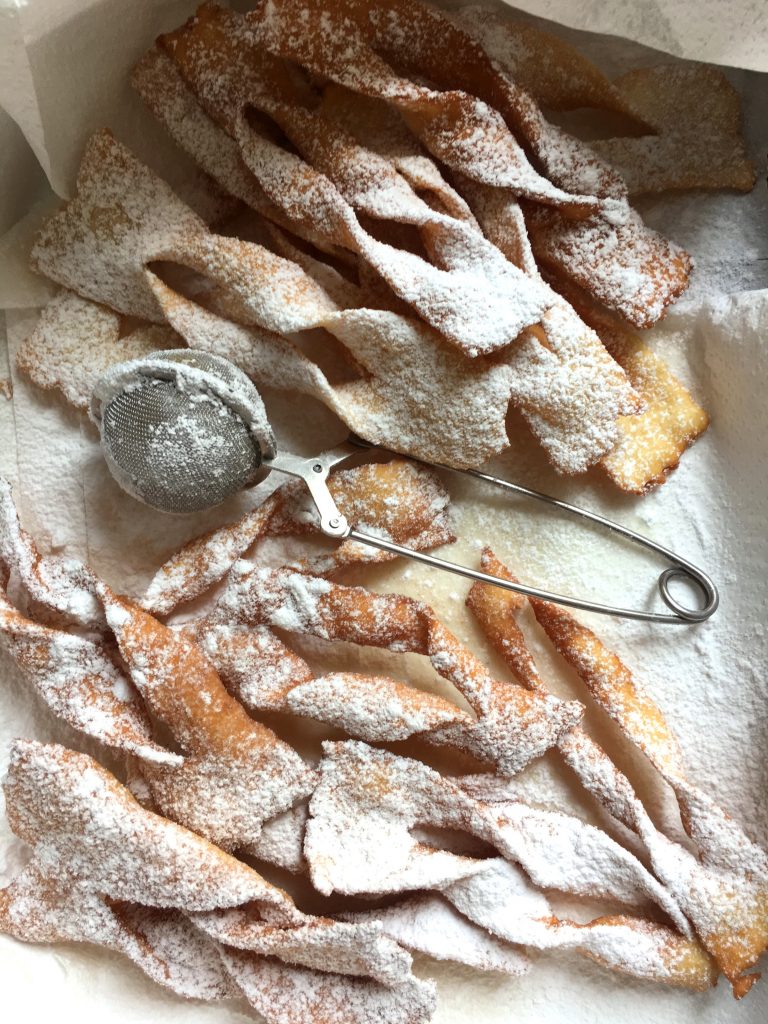
Cenci 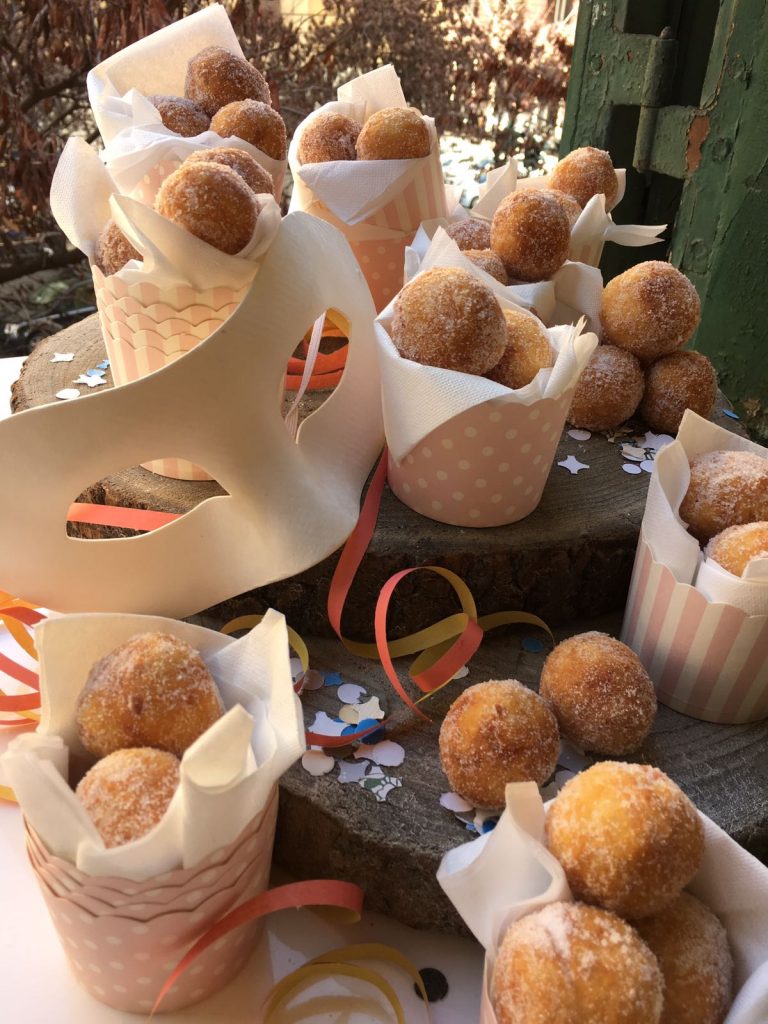
Fritelle di Riso 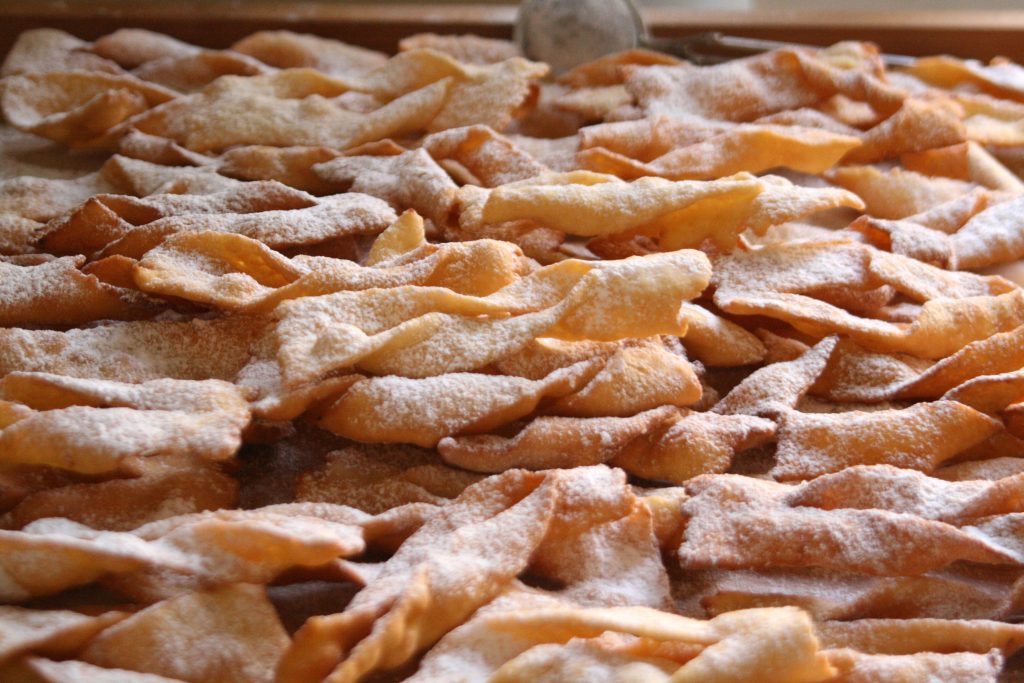
Other popular sweets are Fritelle di Riso – Fried balls of sweet rice tossed in sugar which is also incredibly delicious! You will also find Schiacciata Alla Fiorentina in many bakeries which is not at all like the traditional savoury schiacciata bread. It is more like a traditional orange sponge cake generously dusted with icing sugar and a ‘Giglio’, the symbol of Florence, dusted with cocoa in the centre. I prefer the version filled with Chantilly cream.
My sister Toni has recipes for the Cenci and Fritelle on her blog which I’ve linked here for you.
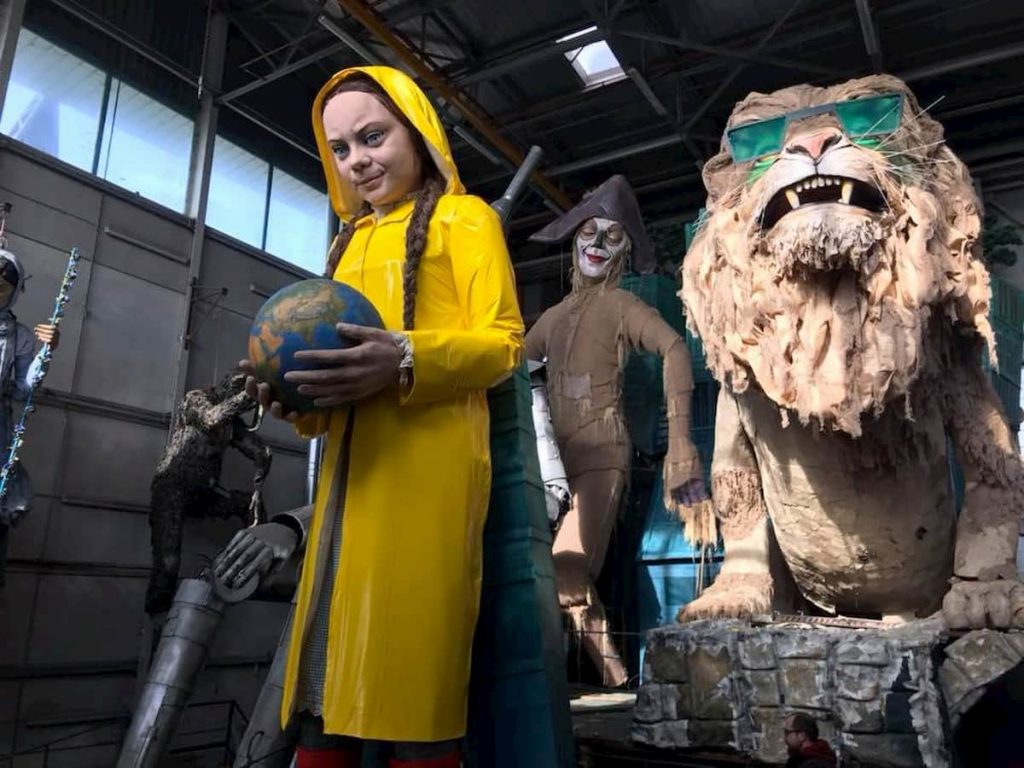
This year the floats and their political message have not disappointed. Trump has been portrayed as has Swedish environmentalist Greta Thunberg as well as footballer Cristiano Ronaldo and local Italian politicians, Luigi Di Maio, Matteo Salvini and Giuseppe Conte.
You can see the parade each weekend during February along the promenade but also take the time to visit the Cittadella and museum of the Carnival to get a total understanding of this iconic event.
+ show Comments
- Hide Comments
add a comment